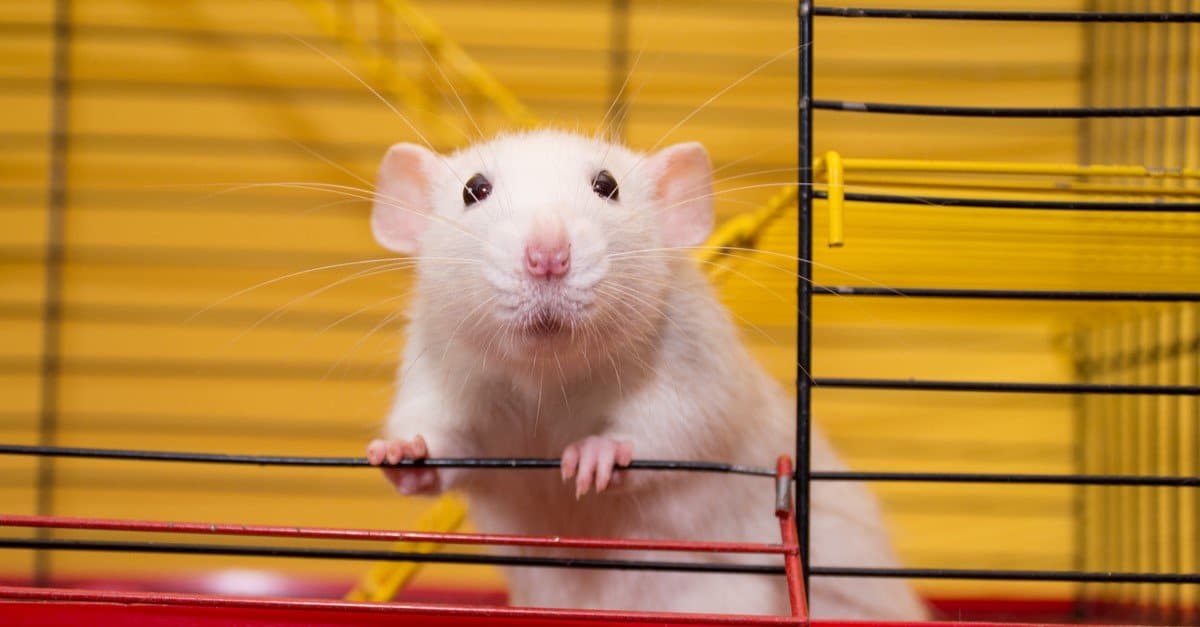If you’ve ever had a rat infestation in your home, you’ve probably wondered how fast they populate. After all, where there’s one rat, there are dozens more! Or perhaps you have a pet rat, and you suspect it may be pregnant. Either way, you’d like to know: how long are rats pregnant? And how many little rats can they produce in one shot? Follow along to find out all about rats and their pregnancies!
Types of Rats
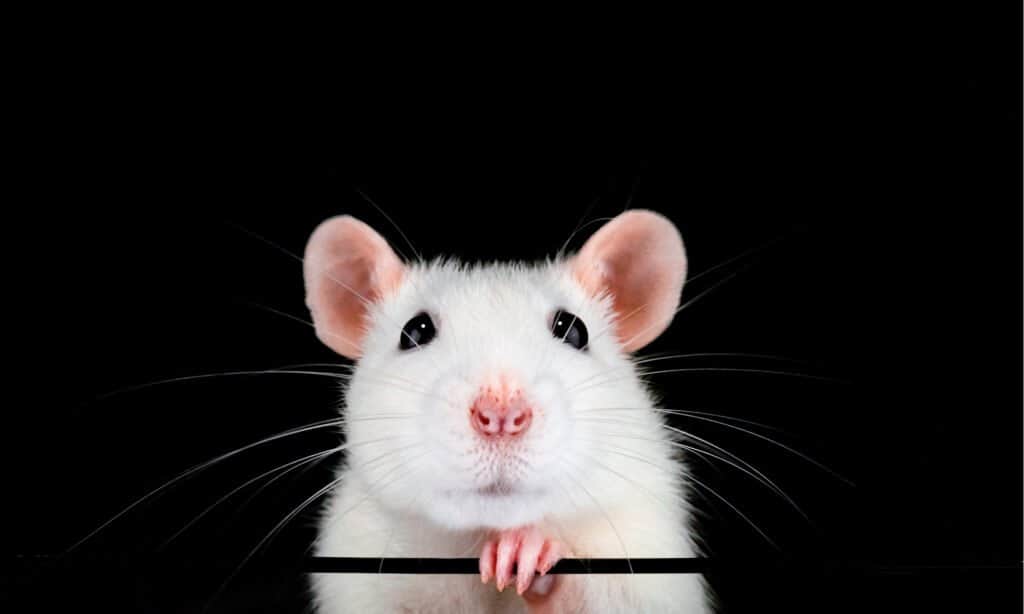
Rats are medium-sized rodents with long, thin tails.
©Linda Bestwick/Shutterstock.com
Rats belong to the order Rodentia, which encompasses all rodents. “True rats” belong to the genus Rattus. The most common species are the black rat (Rattus rattus) and the Norway rat (Rattus norvegicus). Norway rats are also called common rats, brown rats, or sewer rats; they tend to live among humans as pests. There are over 60 species of rats.
Scientists call a group of rats a mischief; male rats are bucks, and females are does. Young rats are pups or kittens.
Rat Appearance and Size
Rats are medium-sized rodents with long, thin tails. These tails are nearly hairless and release excess body heat to control core temperature. They can also be used for balance, to attack predators, or to communicate with other rats. As for rat fur, it can be white, gray, brown, or black.
Rat teeth are sharp and strong, especially the incisors, which can chew through almost any material. They grow continuously through a rat’s lifetime and need to be constantly worn down by gnawing. Rat bites are painful and carry the risk of infection.
On average, rats are larger and narrower in the body than mice. Adult rats have an average body length of 9-11 inches, though their tails can grow another 7-9 inches. They typically weigh between 0.66 and 1.1 pounds. But the largest rat species in the world is the Sumatran rat. Its body can measure up to 20 inches with a weight of up to 8.8 pounds!
Rat Diet and Predators
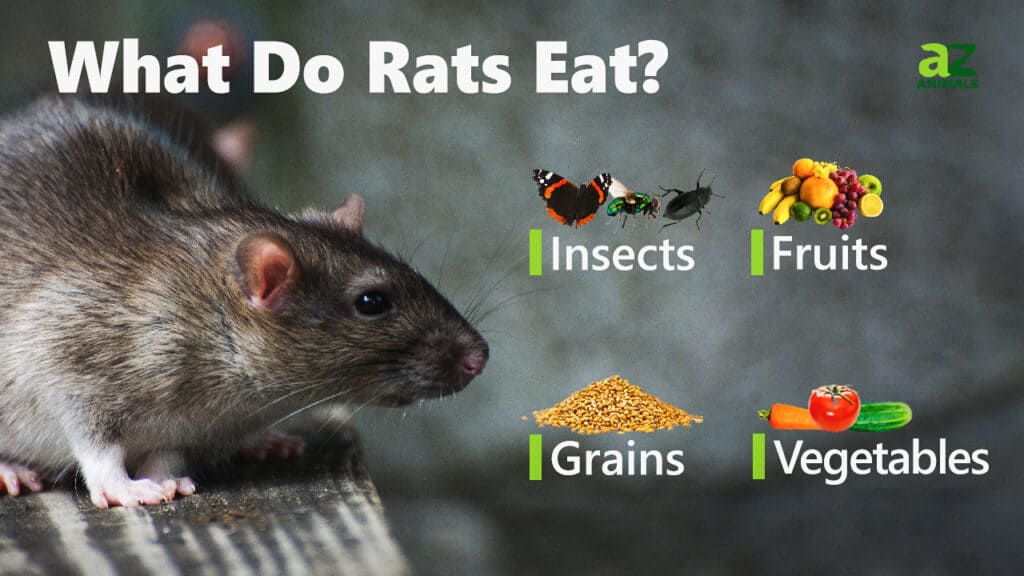
Rats are omnivores, consuming both plants and animals. They are notorious for eating anything they come across, including garbage. This is one reason they are so attracted to houses and other buildings.
In the wild, rats will eat seeds, nuts, grains, vegetables, and fruits. They tend to gravitate toward a vegetarian diet. However, a rat living in the city will often forage meat out of garbage containers. Domesticated rats do best with a mixture of fruits, vegetables, grains, meat, eggs, and rat pellets.
Rats have a number of predators. Some of the most common are cats, snakes, weasels, and birds of prey like owls, hawks, and falcons.
Rat Social Behavior
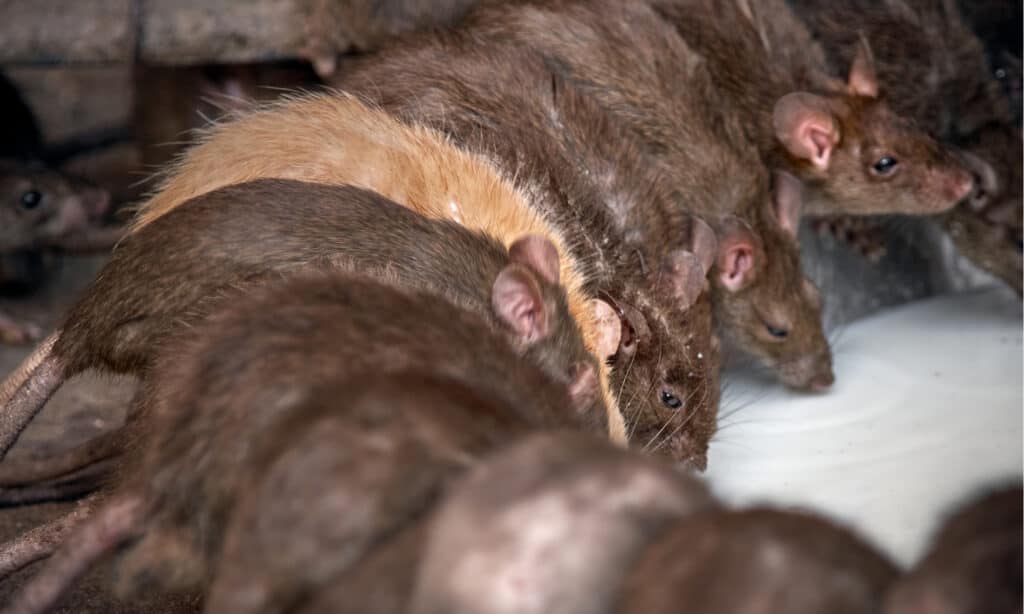
Rats are social animals dominated by an alpha male.
©Kylbabka/Shutterstock.com
Rats are highly intelligent mammals, which explains their frequent use as test subjects in laboratories around the world. They are able to problem-solve and grasp concepts quickly. That said, they also have a certain degree of emotional intelligence. Scientists have found that rats are capable of showing empathy, freeing other rats from cages, and sharing their food.
This is no surprise given their social natures. Rats live in mischiefs dominated by an alpha male rat. The other rats fall into a hierarchy below the alpha. They live in these multi-generational groups long-term, allowing them to forge bonds. Mothers typically nurture their young until adulthood, though some does can be indifferent depending on their own upbringing.
Rat Habitat
Rats live everywhere on earth except in 2 places: Antarctica and Alberta (Canada). Antarctica is obviously too cold and barren to support populations of rats, though human dwellings might host small mischiefs. Alberta, on the other hand, launched an aggressive anti-rat campaign in the 1950s to exterminate the rats intruding into the province. The campaign was successful, becoming a model for other provinces and countries looking to deal with their rat problem.
Rats live in a vast array of urban and rural habitats. In urban settings, they live in homes, business places, dumps, and sewers, feeding off garbage and leavings. Attics, basements, walls, and sheds can all harbor rats. In rural or wild settings, rats live in grasslands, swamplands, forests, scrublands, deserts, rainforests, and anywhere else they can find food and shelter. When colder temperatures arrive, they seek shelter in buildings or underground.
Rat Reproduction and Lifespan
Female rats reach sexual maturity in 8-12 weeks, while males mature in 10-12 weeks. The alpha male in the mischief will mate with several females at once. He jealously guards both this privilege and his territory. When a female is successfully impregnated, she builds a nest for her litter to prepare for the pups.
Wild rats only live 2 years on average; some may live only a year. Captive rats typically live longer, as long as 7 years. This means healthy females could produce several times the number of litters of their wild counterparts.
How Long Are Rats Pregnant?

Rats are pregnant for 21-23 days before giving birth.
©iStock.com/Bilanol
Rats are pregnant for 21-23 days before giving birth. This short gestation period, coupled with their litter size, means rats reproduce extremely quickly. Scientists have calculated that a single pair of rats could generate as many as half a billion rats in 3 years! However, this is unlikely to happen under normal circumstances due to the presence of predators, disease, and limited food sources.
How Can You Tell If a Rat is Pregnant?
Because rats are so small, pregnancy can be difficult to detect. Females will typically gain weight, especially around their abdomens. Gentle application of the fingers may reveal a slight protrusion of the belly. The mammary glands may also appear swollen or enlarged with limited hair loss in the area.
A pregnant rat may become more territorial and aggressive. In this case, it is best not to disturb her. She will eventually begin gathering materials to build a nest, usually plant matter, though she will make do with whatever is at hand. For pet rats, owners should supply soft, suitable materials.
How Often Can a Rat Get Pregnant?
Rats can get pregnant every 4-5 days when they go into heat. This extremely frequent estrous cycle means female rats have plenty of opportunities to become pregnant. Considering the gestation period and the time needed to wean the pups, a female rat can have up to 6 litters a year.
Rat Litter Size
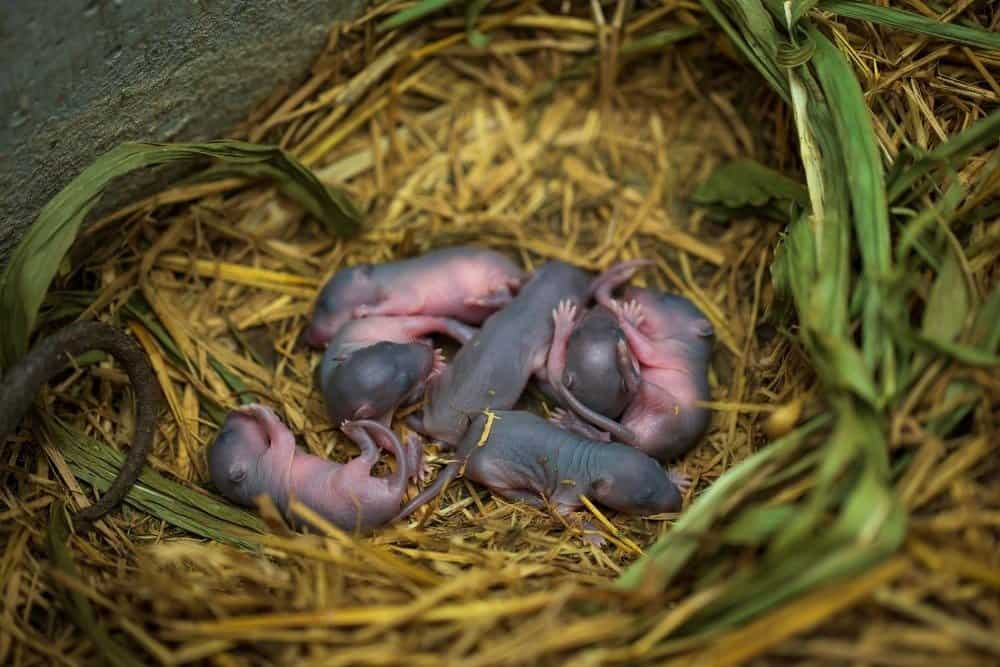
Rats can have up to 6 litters a year. When not pregnant or carrying for young, females go into heat every 4-5 days.
©SURAKIT SAWANGCHIT/Shutterstock.com
Rats produce litters of 5-12 pups, though there are usually no more than 10 in a litter. The birth lasts about an hour. The pups are deaf and blind, relying entirely on their mother for survival. New mothers will deliberately step on their pups to help their bowels move. They do not enter heat again until after all the pups have been weaned. Weaning happens 21 days after birth.
Mother rats do occasionally eat their young, but this is uncommon and usually occurs under stressful conditions. Other rats may eat the pups, however, including other females.
Though humans often despise them, rats are highly intelligent, social animals that have proven their usefulness both as test subjects and beloved pets.
Thank you for reading! Have some feedback for us? Contact the AZ Animals editorial team.

